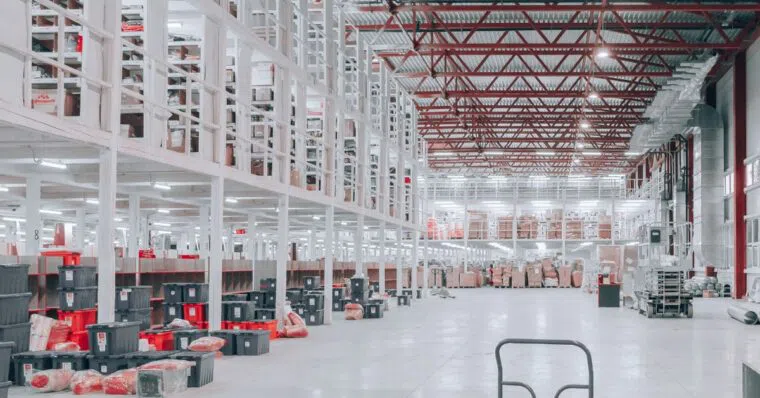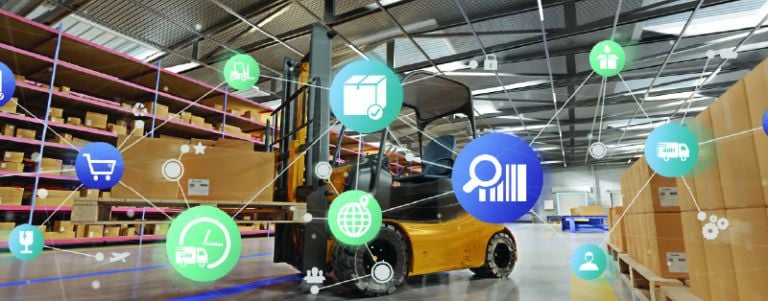What is Supply Chain Management? Is it a Good Career Choice?

- What is Supply Chain Management?
- The Basic Components of Supply Chain Management
- The 5 Parts of Supply Chain Management
- Benefits of Supply Chain Management
- How Does Supply Chain Management Work?
- Why is Managing Supply Chain Important?
- Career Outlook in Supply Chain
- List of Companies That Have the Best Supply Chain
In a world where acquiring your favorite products is as simple as clicking a button online, it is easy to lose sight of just how complex this process is. Anyone can assume that it is a linear dispatch from the factories to your doorstep. Far from it. Instead, this entire process consists of numerous steps that may occur across multiple locations which need to be executed perfectly for the product to reach you. Together, these steps form the supply chain. Well-crafted supply chains are essential to the proper functioning of the modern world. If you are interested in learning how supply chains work and what the benefits are of managing them effectively, here’s a deep dive into what is supply chain management and how it works.
What is Supply Chain Management?

Supply chain management is the management of the flow of goods and services, data, and funds related to a product, including all the processes that transform raw materials into the final product. It starts with the procurement of raw materials and ends with the delivery of the finished product to its destination. Simply put, supply chain refers to the practice of coordinating the various activities that produce and deliver goods and services to customers.
While many think that supply chain management refers to logistics, logistics is only a part of the supply chain. Other activities include the designing, manufacturing, packaging, and transportation of the goods.
The Basic Components of Supply Chain Management
A supply chain can appear extremely complicated, but the execution is streamlined and broken up into five basic components or attributes. Management of each detail ensures the sustainability and efficiency of a supply chain. These include planning, sourcing, making, delivering, and returning.
The 5 Parts of Supply Chain Management
Now that we’ve discussed what is supply chain management, let us look into what each of the five components entails.
1. Planning
It is an essential process for the efficient operation of a supply chain. Planning keeps the supply chain manager in control of aspects like inventory, demand planning, and cash flow. It helps match supply to customer demand.
2. Sourcing
It is necessary to work with vendors who are trustworthy and adaptable enough to meet the changing requirements of customers. While sourcing goods, businesses should be mindful of lead time and how well a supplier can meet those requirements.
3. Making
The objective while manufacturing a product is to minimize errors and ensure perfect repeatability. The making process can be further divided into sub-tasks, such as assembly, testing, inspection, and packaging.
4. Delivering
Every supply chain requires a stable and efficient delivery channel. With multiple moving parts, it is extremely challenging to keep delivery channels in check. When setting up distribution, it is essential to have backups in case one method of transportation temporarily fails.
5. Returning
Returns are bound to happen at some point during the process. Streamlining the return of items is vital to uphold and exceeding expectations for the customer service experience.
Benefits of Supply Chain Management
1. Better Flow of Materials and Products
In terms of logistics, the objective of supply chain management is to ensure the most efficient movement of products and materials at the lowest cost. An effective supply chain will ensure the seamless movement of raw materials as well as products.
2. Better Insights
Supply chains are all about efficiency. In the quest to make processes faster and more cost-efficient, supply chain management tools generate large volumes of data. Insights drawn from this data can help develop analytical strategies for improvement and innovation.
3. Cost Reduction
It’s hard to establish a great supply chain without worrying about cost-cutting. Effective supply chain management can lead to savings that can be utilized in other aspects of a business’s operations.
4. Increased Productivity
Supply chain management improves communication between various stakeholders. This leads to coordination among vendors, logistics organizations, and suppliers, thus helping businesses boost productivity.
5. Improved Customer Satisfaction
When supply chain management comes into play, often product quality improves, lead time decreases and customer service improves. This leads to happy customers who are more likely to engage with your business in the future.
How Does Supply Chain Management Work?
Supply chain managers are in charge of everything from design to redressals and manufacturing to distribution. They are even responsible for information systems that direct all these processes. By ensuring an efficient supply chain, businesses can reduce expenses and improve the efficiency of their services. Supply chain managers delve into every aspect of the business by collecting data and figuring out ways by which processes can be made even more efficient.
Why is Managing Supply Chain Important?
Supply chain management is important for a business since it helps meet specific business objectives. It involves actively streamlining business activities to maximize customer value. Controlling certain processes can yield results that are good for the business in the long run. For example, when you attempt to control manufacturing, you may end up reducing production time, costs, and accidents in the factory. Controlling logistics can help reduce the delivery time which enhances customer satisfaction.
Supply chain management also helps keep organizational processes in check. The process often acts as an audit of the various aspects of a business. It also makes business practices more sustainable; for instance, making transport more efficient reduces vehicular emissions which, in turn, protects the environment
Career Outlook in Supply Chain
Having discussed what is supply chain management, let’s look at the career outlook in this field. Supply chain management is one of the hottest sectors to enter today. The demand for supply chain managers is at an all-time high. According to the US Bureau of Labor Statistics, the employment of logisticians will grow by 28 per cent between 2021 and 2031.
The salaries for supply chain managers are also extremely rewarding. According to Indeed, the average annual salary can range between $62,543 and $146,215 with an average base salary of $95,628.
List of Companies That Have the Best Supply Chain
Here are some of the top companies that have invested heavily in improving their supply chains and have the best supply chain management, according to Gartner. The ranks have been determined based on various key attributes like the return on physical assets, revenue growth, and inventory turns.
- Cisco Systems
- Colgate-Palmolive
- Johnson & Johnson
- Schneider Electric
- Nestlé
- Intel
- PepsiCo
- Walmart
- L’Oréal
- Alibaba
While most people may not be familiar with the work of supply chain managers, given the back-end nature of their role, the impact they have on people’s lives is staggering. Every time you get a parcel delivered, for every replacement part that is the perfect fit, and for each customer complaint that gets resolved quickly, you can thank a supply chain manager. If you are interested in exploring this field, consider taking up one of the many supply chain courses from Emeritus, which are offered by several premier universities.
Write to us at content@emeritus.org




